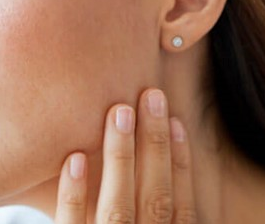Mandibular Condyle Definition, Location, Function, Pain, Fracture
The mandibular condyle is a bony protrusion that can be seen on the posterior surface of the jaw. It is the part of the mandible that articulates with the temporomandibular joint. The condyle is responsible for maintaining the joint's stability and conveying force from the masticatory muscles to the mandible. It is composed of two parts: the body, which is positioned anteriorly in the jaw, and a bulbous condyle, which is located posteriorly on each ramus.
Definition
It is the condyle of the ramus of the mandible that articulates with the skull that is referred to as the "mandibular condyle." It is also known as the Condyloid or Condylar process.
Location
When the mouth is closed, the mandibular condyle is positioned in the middle of the mandibular fossa, which is also referred to as the glenoid fossa. The condyle slides anteriorly under the midpoint of the articular eminence when the mouth is open.
Function
The mandibular condyle functions as the site of articulation with the temporal bone, and both together make up the TMJ. Their articular surfaces are divided by an articular disc, that serves to offer a cushioned and smooth surface on which the joint can properly move. This disc is located between the two articular surfaces of the joint.

If the condylar process at the TMJ erodes, the joint will naturally retract posteriorly, which can cause mandibular retrognathia, tooth malocclusion, and open bite abnormalities. When the TMJ is adjusted, patients frequently complain of symptoms including jaw pain, headaches, and popping or clicking sounds.
Mandibular Condyle Pain & Fracture
Condylar resorption is the process of bone breakdown and loss that occurs in a portion of your temporomandibular joints (TMJs), often known as your jaw joints. The rounded ends of your lower jaw (mandibular condyles) where they attach to your TMJ on both sides of your head are impacted by this bone loss. Your lower jawbone (mandible) will get smaller and move backward due to a process called condylar resorption (pullback). This alteration in your jaw might develop quite fast (within a few months), or it can take a significant amount of time (years). Your facial structure and look may alter as a result. You might observe that your chin appears less defined or that your lower jaw appears smaller.
Mandibular Condyle Fracture Treatment
Physical therapy is typically used to treat intra-articular fractures of the mandibular condyle, either with or without temporary maxillo-mandibular stabilization. On the other hand, this can result in limited mandibular mobility, which in turn can contribute to a partial recovery of manducatory function. Over the course of the past 15 years, there has been a rise in the number of people seeking open treatment (surgical procedures) for these fractures. Although there is mounting evidence that the open approach may be preferable in some instances of subcondylar fractures, the optimum course of action for high condylar fractures is still up for debate.
 Reviewed by Simon Albert
on
November 08, 2022
Rating:
Reviewed by Simon Albert
on
November 08, 2022
Rating:











